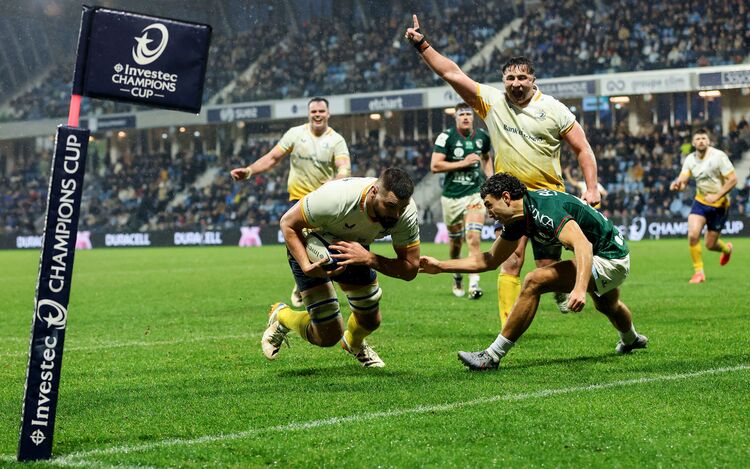By Peter McDermott
Dave Koza and his Pennsylvanian-born wife drove every year cross country to his home town of Torrington, Wy., where he was a sporting legend, having been a high school basketball, football and track star. But it was in baseball — not a popular sport locally — that he had shown the most promise, and he made it his profession.
Florida-raised Wade Boggs had an equally supportive wife, who was completely devoted to his dream of making it big in baseball. At the end of each season, the couple drove back to the South with their young daughter.
The men were once Triple A teammates with the Red Sox of Pawtucket in Rhode Island. History, however, links them now because they both played in the longest pro game ever. It began on Saturday evening, April 18, 1981.
But Koza never made it; he didn't get to play one inning in the major leagues. In contrast, Wade Boggs, once regarded a non-prospect by the Boston Red Sox front office, is in the Baseball Hall of Fame.
Yet if there is a protagonist in Dan Barry's "Bottom of the 33rd: Hope, Redemption, and Baseball's Longest Game," it's Koza and not only because he drove home the game-winning hit when the game was rescheduled two months later.
McCoy Stadium was packed with 6,000 fans and 140 reporters for that occasion on June 23. Major League Baseball was on strike, and the nation had turned its eyes to Pawtucket.
It was somewhat different on the unseasonably cold Easter Saturday when 1,740 paid to see their local team play the Rochester Red Wings, which included the rising star Cal Ripken Jr., another who would make it to the Hall of Fame.
Barry, the "This Land" columnist for the New York Times, writes that the "April air carries an early December bluster with a January bite."
Just barely one percent was still there at the end of the 32nd inning at 4:07 a.m. on Easter Sunday morning — 19 diehards that included a father and his 9-year-old son.
Barry lived within shouting distance of the stadium for four years. "At night you could hear the moans and groans of the crowd," he recalled. He was then a reporter with the Providence Journal-Bulletin, his second newspaper job.
When the Long Islander came to write about ex-union leader Thomas P. McCoy, the larger-than-life Depression-era, Irish-American mayor who had the stadium built; Joe Morgan, the son of County Clare immigrants and home-team manager who was ejected in the 22nd inning; Ben Mondor, the businessman who reluctantly took over the Pawtucket Red Sox in the 1970s and to whom the book is dedicated; and the aspiring superstars who built barrel fires to keep warm on Easter Saturday, 1981, it helped that he had moved to the struggling mill town just six years after that night.
Living in Pawtucket, Barry couldn't but be made aware of the longest game in baseball's history. He was brought back to the subject in recent years, though, by a chance discovery of an illustrated children's book about it. It made him think of his own experience on an over-30s team in Rhode Island. He knew what it was like to be an outfielder looking up at the stars at midnight wondering when the game would end. "I had a flashback to those moments," he said.
Then, flicking through the illustrated book again, he had an epiphany: "I thought: 'What was going on with those guys that night?'"
All of them had been told that only 3 percent who signed professional contracts ever made a career at the top level. By the end of 1980, a relatively small number of Americans had played at least one major league game. "Twelve-thousand; their bodies and ghosts would not fill a third of Fenway Park," Barry notes.
However, 40 minutes from the fabled stadium, 20-, 21- and 22-year-olds played on Triple A's "fields of the almost-there."
Barry writes: "They are unworldly farm boys from the South and just-glad-to-be-here boys from the Midwest and gifted middle-class boys from Southern California and hungry-but-homesick boys from Latin America."
If still in the Triple A by age 26, 27 or 28, players have entered the "fields of the not-quite-good-enough."
The New York Times columnist, whose first book "Pull Me Up" described his Irish-American upbringing, looks forward from that April night to tell us what happened to some of them and to the batboy they called Panic and to several others who were at McCoy Stadium that night.
Slightly over half of those who played would eventually get to Major League Baseball. "Some made decent careers," Barry said. It was a fleeting experience for others.
One got up to bat five times. "He made it to the show, as the sorry cliché says, but he didn't have a chance to stir the milk in his coffee," Barry said. Another is still pleased that the one hit of his career was against a Hall of Famer at Yankee Stadium.
A substantial number never got the call. Sometimes, they felt passed over, or just unlucky to have signed for the wrong franchise. "It would gnaw at them later," the author said.
At least two players in Barry's account, both of them superb athletes, simply couldn't deal with a curveball.
Pawtucket manager and baseball sage Morgan claimed he could always tell who would make it to the majors and who wouldn't. "In one scene, he has to tell a player 'you're very good, but you're not good enough," he said.
That's not a phrase that Barry himself has had to hear in recent weeks. "Bottom of the 33rd" has already been deemed to be — by people who know about such things, the Morgans of their world — a classic of baseball literature.
PHOTO BY PETER MCDERMOTT









